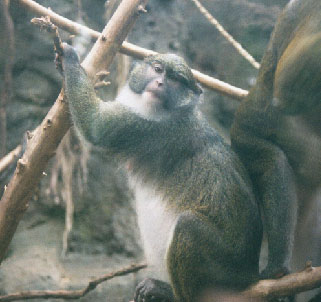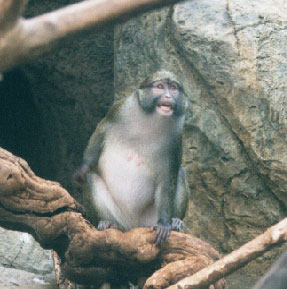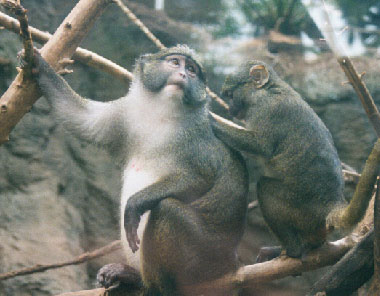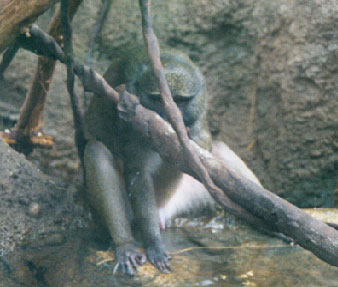
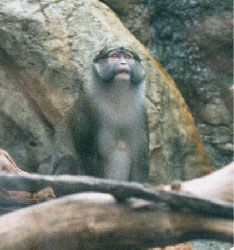
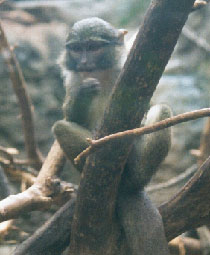 |
REFERENCES:
Ankel-Simons, F. 2000. Primate Anatomy. Academic Press: San Diego.
Burton, F. 1995. The Multimedia Guide to the Non-human Primates. Prentice-Hall Canada Inc.
Estes, R.D. 1991. The Behavior Guide to African Mammals. University of California Press.
Fleagle, J. G. 1988. Primate Adaptation and Evolution. Academic Press.
Gautier, J.P. 1985. Quelques caracteristiques ecologiques du singe des marais: Allenopithecus nigroviridis Lang 1923. Rev. Ecol. (Terre Vie). Vol. 40, 331-342.
Gautier, J.P. 1988. Interspecific affinities among guenons as deduced from vocalizations. in A Primate Radiation: Evolutionary Biology of the African Guenons. eds. A. Gautier-Hion, F. Bourliere, J.P. Gautier, and J. Kingdon. Cambridge University Press: Cambridge.
Gautier-Hion, A. 1988. Polyspecific associations among forest guenons: Ecological, behavioural and evolutionary aspects. in A Primate Radiation: Evolutionary Biology of the African Guenons. eds. A. Gautier-Hion, F. Bourliere, J.P. Gautier, and J. Kingdon. Cambridge University Press: Cambridge.
Gautier-Hion, A. and Maisels, F. 1994. Mutualism between a leguminous tree and large African monkeys as pollinators. Behavorial Ecology and Sociobiology. Vol. 34, 203-210.
Gevaerts, H. 1992. Birth seasons of Cercopithecus, Cercocebus, and Colobus in Zaire. Folia Primatologica. Vol. 59, 105-113.
Kingdon, J. 1988. What are face patterns and do they contribute to reproductive isolation in guenons? . in A Primate Radiation: Evolutionary Biology of the African Guenons. eds. A. Gautier-Hion, F. Bourliere, J.P. Gautier, and J. Kingdon. Cambridge University Press: Cambridge.
McGraw, S. 1994. Census, habitat preference, and polyspecific associations of six monkeys in the Lomako Forest, Zaire. American Journal of Primatology Vol. 34, 295-307.
Nowak, R.M. 1999. Walker's Primates of the World. The Johns Hopkins University Press: Baltimore.
Rowe, N. 1996. The Pictorial Guide to the Living Primates. Pogonias Press: East Hampton, New York.
Zeeve, S.R. 1985. Swamp monkeys of the Lomako Forest, Central Zaire. Primate Conservation. Vol. 5, 32-33. |
